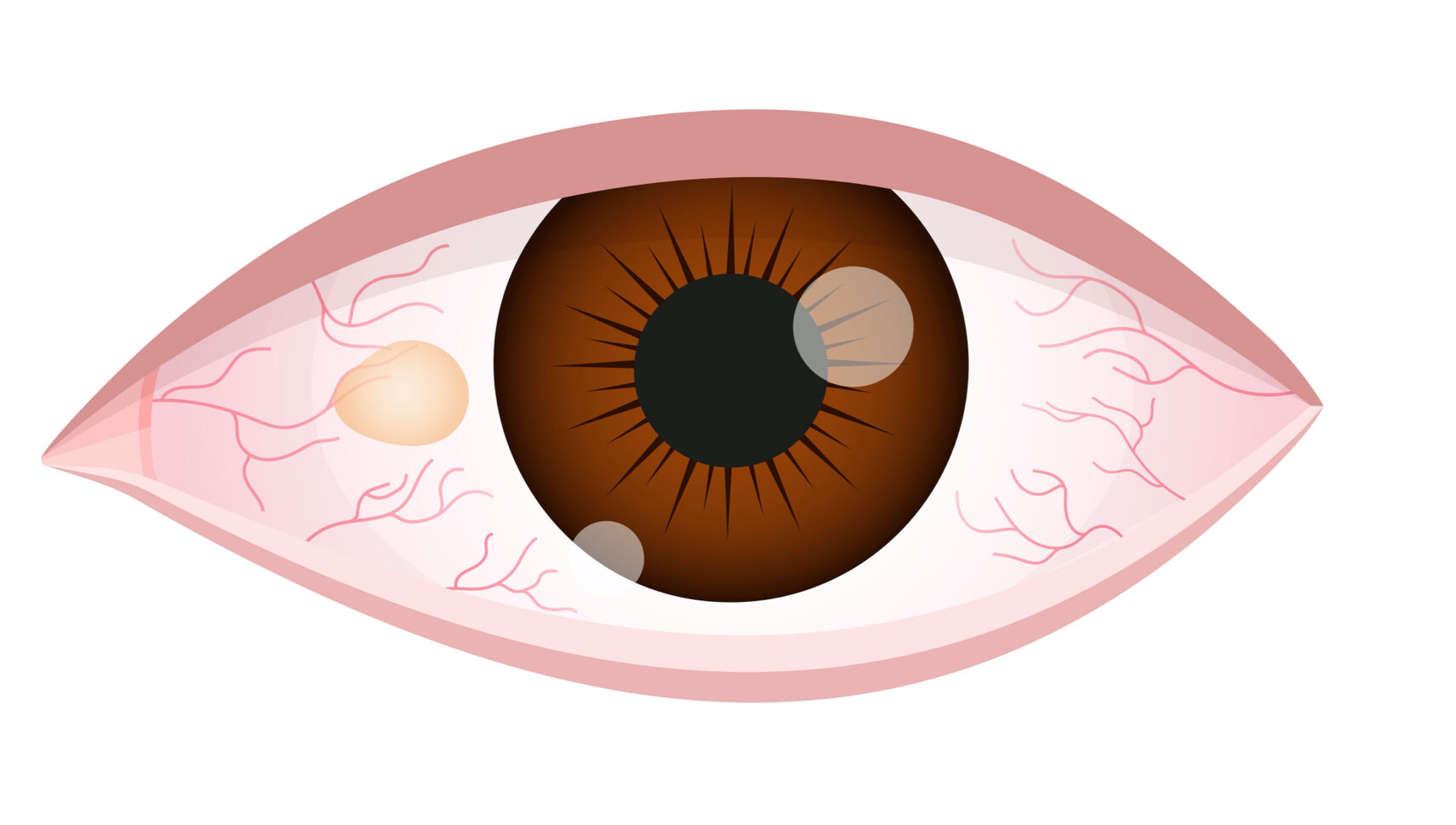Pterygium

What is a Pterygium?
Pterygia (singular: pterygium) are non-cancerous, wedge-shaped growths that appear on the sclera or cornea of the eyeball. They are generally thought to be the result of over-exposure to ultraviolet light, which is why the condition is often referred to as “surfer’s eye.” However, ultraviolet light is not the only cause of pterygia, as they can be caused by exposure to dust, wind, and dry eye disease, too.
Symptoms
Pterygia generally develops at the corner of the eye nearest to the nose, but they can grow from either corner and in one or both eyes. The most noticeable symptom of pterygia is the sudden appearance of an elevated, vascular growth in the corner of the eye. Mild pterygia may be completely asymptomatic outside of their appearance. For those that are larger or more severe, symptoms typically include pain, itchiness, and the sensation of something being stuck in the eye. In the most severe cases, pterygia can change the shape of the cornea and cause serious issues with vision.
Diagnosis and Treatment
Diagnosing a pterygium is relatively straightforward. Your doctor will conduct a thorough exam of your eye to determine the severity of the growth and how best to treat it. Treatment can range from eye drops or ointments, to surgical removal for severe cases.
Once the pterygium has been diagnosed, your doctor will need to determine the severity of the growth and your symptoms to determine how best to treat it. If you are not experiencing significant symptoms, it is possible it will not require any treatment. However, if you are experiencing severe discomfort or the pterygia is blocking your vision, your physician may suggest medications, like eye drops or ointment, and, if those fail, you could ultimately be a candidate for surgical removal of the pterygium.
